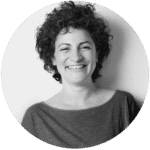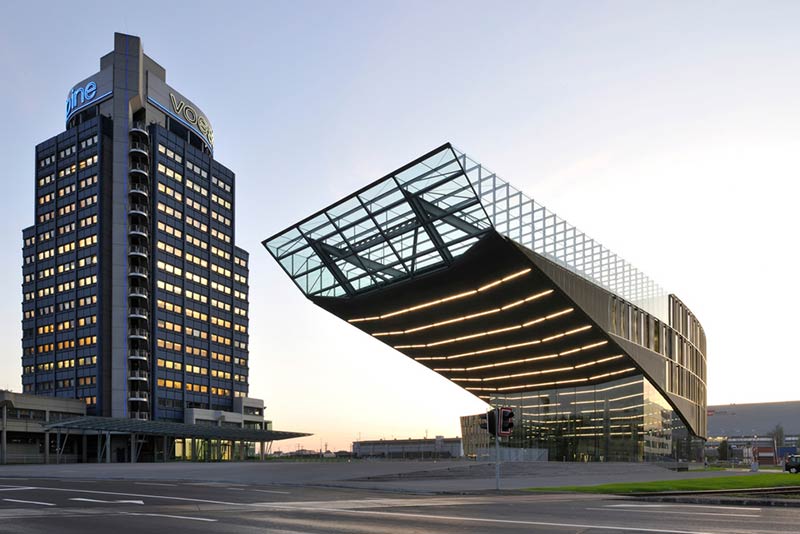
The Voest steelworks in Linz has erected its representative sales and finances head office around an extensive open area. The urban planning concept and the design of the buildings on the square were carried out by Austria’s most important architect living abroad, following a competition between several top-rank designers.
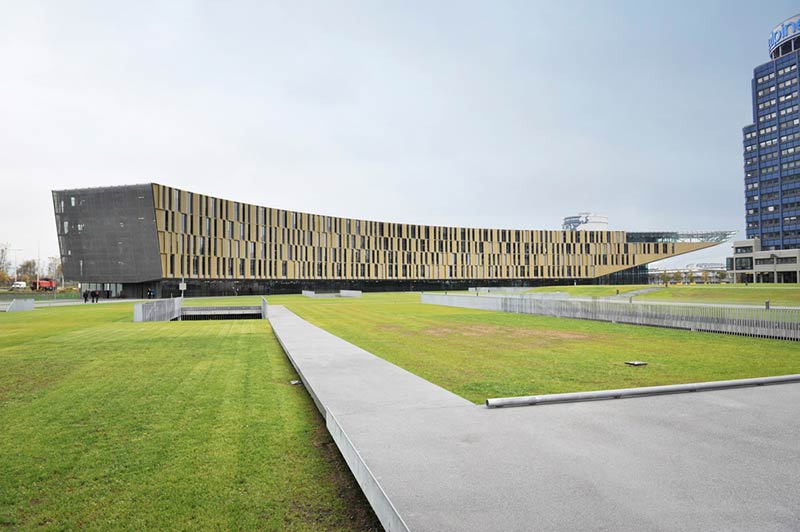
The major gesture
Linz does not owe its reputation as a location of industry solely to “the Voest”, as this business is known in Upper Austria. But the perception of this city, both from inside and outside, does appear to be particularly closely linked with this steel company, founded under the name Hermann Göring Werke, which today is a global player. Fortunately there is in “the Voest” an awareness of the responsibility that this brings with it. Serious efforts are made − not only in terms of improving the quality of the air in Linz. And so the visiting card that the voestalpine Stahl GmbH (the company’s full title) presents to us in the form of its new sales and finances head office also stands for this city shaped by industry. And as such it functions excellently: the dynamically curved volume, cut at an angle in front, with the filigree, adjustable golden façade makes an impact on even the most inattentive motorist driving by.
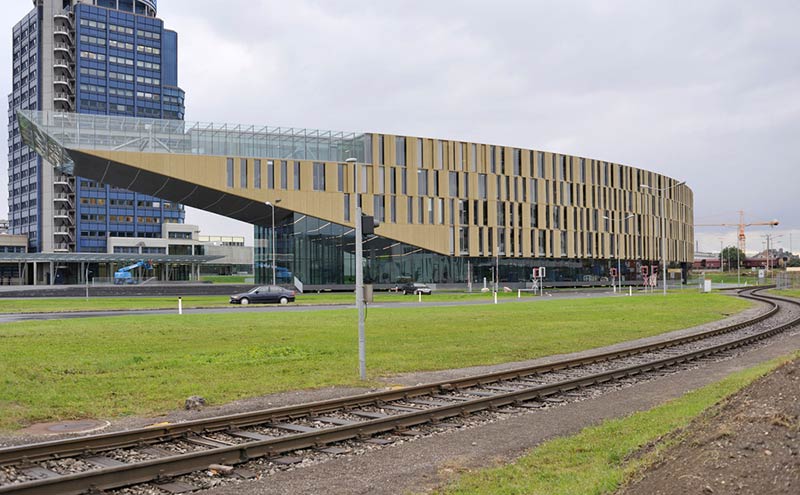
In the build-up for awarding this commission no effort or expenditure was spared to achieve the right result: Dietmar Feichtinger Architectes emerged as winner of a competition in which both the entrants and the jury members were high ranking members of their profession. This project succeeded in convincing the jurors due in no small part to the major gesture it makes. It outlines a wasteland area in what is called the “non-core zone” to the north of the company headquarters known as BG41, to create an expansive but yet clearly bordered open space that extends to the visitors centre in the south. And it achieves the feat of combining three very different buildings to create a representative whole. The park that is to be created here according to the plans of Parisian landscape designers H.Y.L – also the winners of an invited entry competition − has the potential to become one of the city’s most imposing parks. The fact that it is on two levels does nothing to detract from its quality, and indeed the way it interlocks vertically enhances the value of both upper and lower levels.
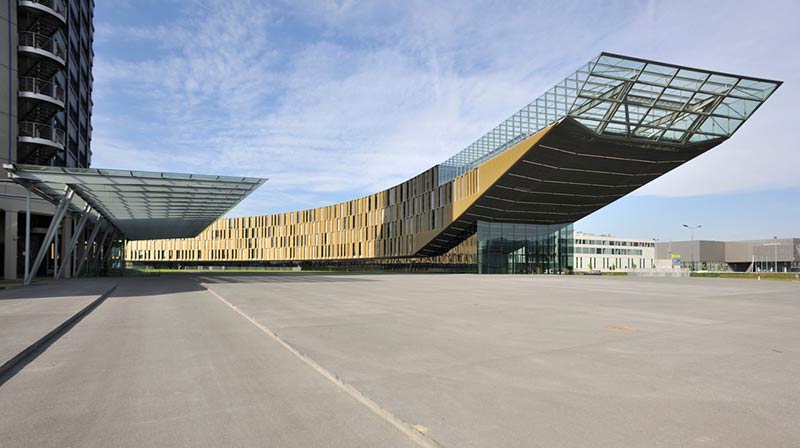
Steel demonstrations
Dietmar Feichtinger Architectes rigorously cleared the entire competition site of motor vehicles. The metal desert that even for the Voest − which is generally most interested in the use of its own products – no longer seemed to have any advertising appeal is now one level lower and has become a “parkgarage” (the German term for car-parking garage) in the double sense of this term. Built of reinforced concrete of remarkable quality, flanked on the open edges by planted embankments, naturally cross-ventilated, lit from planted atriums and broken up into almost domestic proportions by glass walls, some transparent, some satin finish, this garage with its light- coloured polished floor continues the business of representation begun above ground level in a highly skilled way. Whoever does not exploit the privilege of driving under the new steel and glass canopy (also designed by Dietmar Feichtinger Architectes) that projects far in front of the BG41 building and instead, when the weather is inclement, wishes to stay dry by walking through the garage, will not be disappointed by the underground setting.
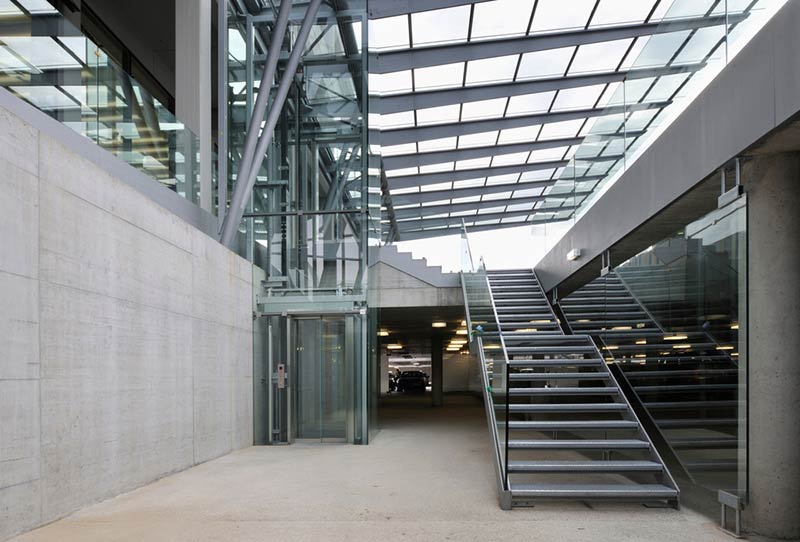
However the main entrance to the sales and finance office lies, impossible to overlook below a daring cantilever that exploits steel’s structural possibilities at the north-eastern end of the building. Here you entire a glazed, seemingly unbounded, foyer that focuses the attention of visitors from the steel reception desk on the one side to the impressive landscape of cranes, waste heaps, and chimneys on the other. From here a panorama lift takes you to the meeting rooms, accessible to a wider public, that are located in this part of the building. In terms of number, size and fittings these rooms respond to the needs of the location Linz as a whole and are augmented by a terrace on the top floor, surrounded by glass walls and open to the sky, which offers exceptional views. All the rooms on the ground floor, which is clearly shaped as a plinth and has a delicately profiled glass façade, are also reserved for “public” functions such as the company’s own travel agency, an archive, advertising media department and similar.
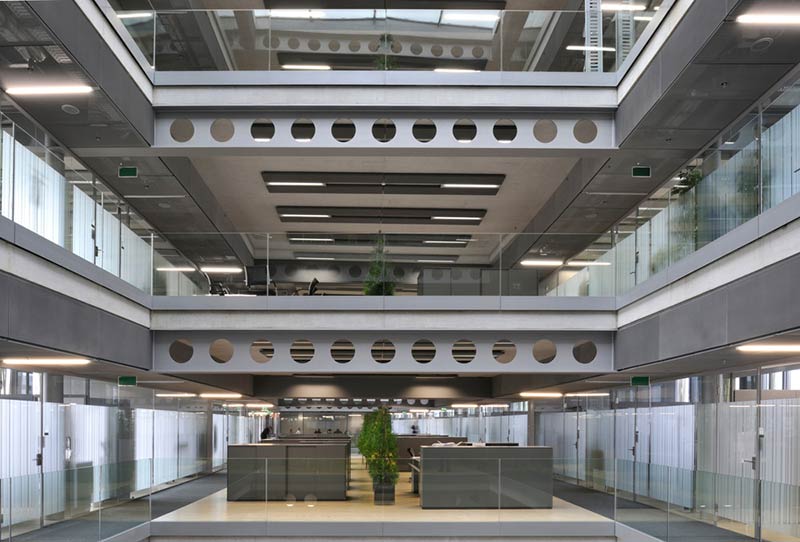
Golden façade, green atria
The offices proper are on the four upper floors that are encased in a shimmering golden façade. They are laid out in a strictly linear, double-loaded fashion, but the curve of the building visually reduces the apparent length. The offices lie along a wide centre zone in which four glass roofed atria are incised.
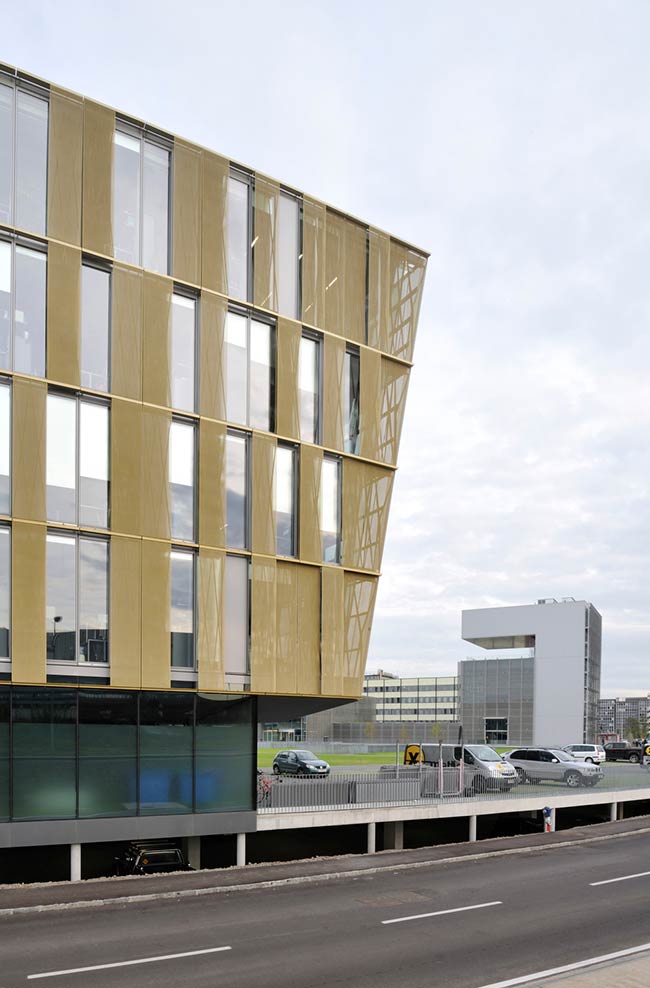
Beside each atrium there is a circulation and services core of exposed concrete, between them are the “living rooms” of the departments. The offices are separated from these communication areas by glass walls, satin-finished in places, which for the staff required some getting used to, as did the restrained colour scheme of the interior: gentle shades of grey are complemented by the light brown of the wooden floors and by strong signal-like colours in the area of the tea kitchens. The relatively narrow subdivision of the façade into full-height opening steel panels and fixed glass elements, also full-height, allows different size offices to be made in accordance with the different requirements. Sliding shade elements of frameless expanded metal on the outside face of the facade and the textile glare protection on the inside ensure agreeable lighting conditions.
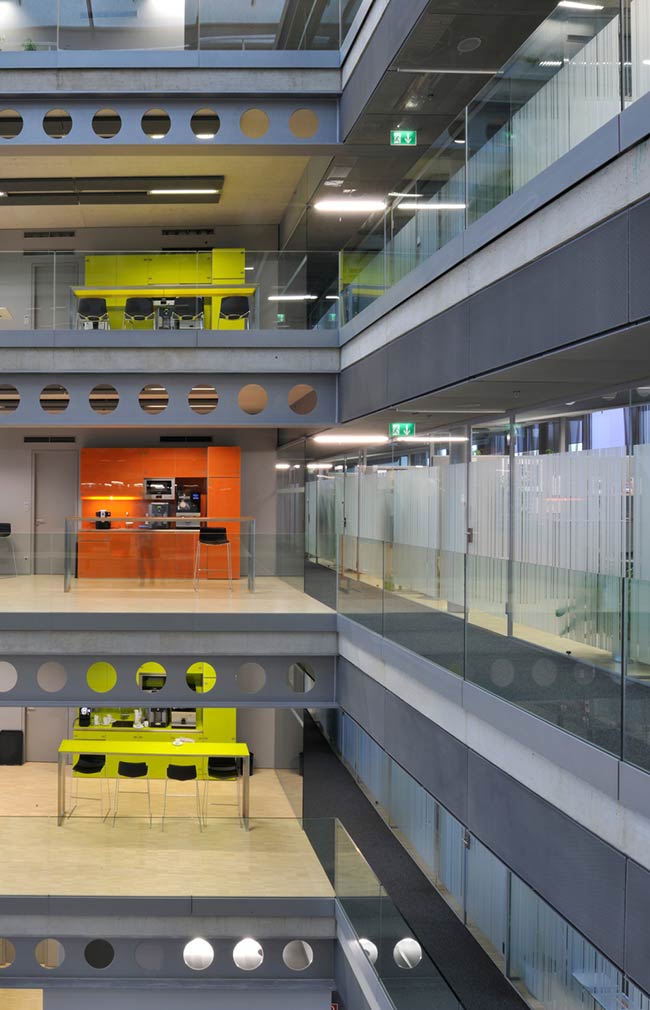
Dietmar Feichtinger Architectes display the steel construction – columns and open web beams, as well as the concrete of the ceiling slabs. The building services which run only above the corridors can be made out behind their expanded metal cladding. The discipline that this demanded in both design and execution adds a further level of quiet elegance to the overall impression, something that, unfortunately, one can often look for in vain in many a palatial office block.
Project Details:
Location: Linz, Austria
Area: 36,700 sqm
Architects: Dietmar Feichtinger Architectes
Project team leader: Claire Bodénez and Gerhard Pfeiler
Team: Philipp Hugo Urabl, Dorit Böhme, Roland Basista, Albert Moosbrugger, Ulli Gabriel, Andreas Trampe-Kieslich, Ralitsa Kafova, Camille Duperche, Katharina Düsing, Nemanja Kordic
Team Competition: Benni Eder, Simone Breitkopf, Barbara Feichtinger-Felber, Vicentiu Sopterean, Silviu Aldea, Markus Himmel, Ruth Pofahl, Rupert Siller
Photographs: Josef Pausch

